-
Car Reviews
- All reviews
- Midsize SUVs
- Small cars
- Utes
- Small SUVs
- Large SUVs
- Large cars
- Sports SUVs
- Sports cars
- Vans
Latest reviews
- Car News
-
Car Comparisons
Latest comparisons
- Chasing Deals
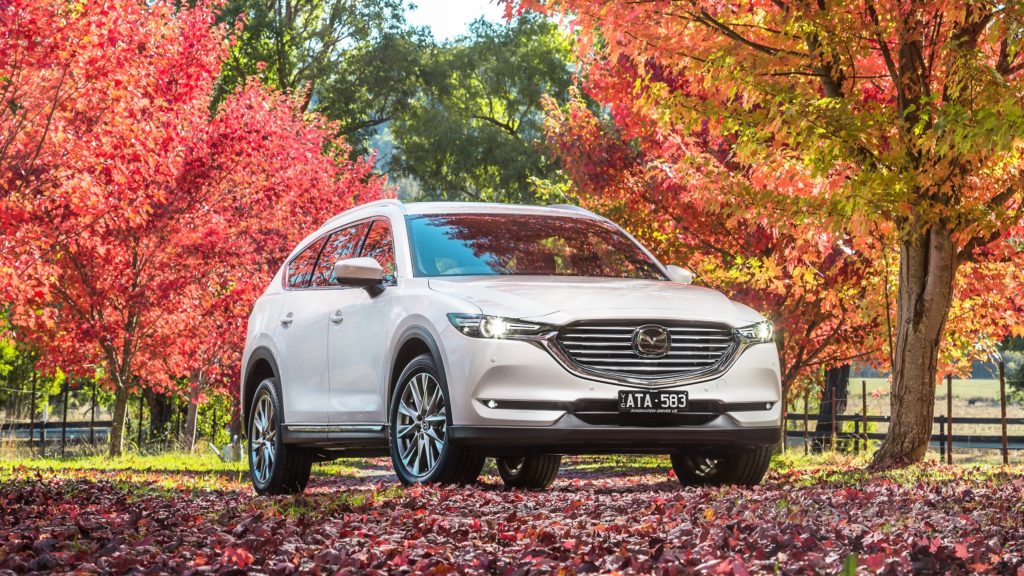
The past decade has seen more change in the Australian automotive landscape than in any other period in time. On one hand, there has been segment-switching, with buyers abandoning family sedans in favour of SUVs. On the other hand, Australians have embraced import brands while local manufacturing fell away. Japan’s Toyota firmly remain the front-runners in the Australian market, while compatriots Mazda hold the second spot. That’s interesting in itself: while Toyota is globally enormous, Mazda is a relatively tiny company that punches hugely above its weight here in Australia – and the local arm of Mazda hold strong influence in the company as a result.
At any given launch of a new Mazda, Japanese executives are shipped out to find out what’s in the water here and how the Australian successes can be replicated elsewhere. Hence, Mazda Australia gets essentially free reign over which models come here: we’re the only major right-hand-drive market to get the large CX-9 SUV, for starters – and at Mazda Australia’s urging, the brand is also sending us their new 2018 Mazda CX-8 , a smaller, diesel-only seven-seater that will sit between the CX-9 and the uber-popular CX-5.
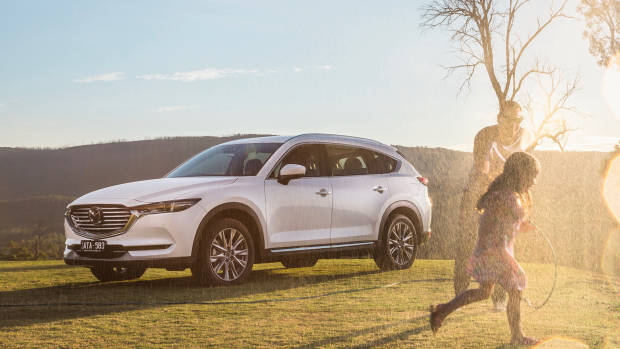
The CX-8 is a new badge within Mazda’s SUV lineup, and it takes some bits from the CX-5 mid-sizer – namely, the dashboard and 2.2-litre diesel drivetrain – while borrowing the CX-9’s longer wheelbase and third row of seating. The end result is a second seven-seater for Mazda in Australia. Why create yet another offering when Mazda’s SUVs sell so strongly in their respective segments? Well, the more the merrier and creating segment-busting cars is working quite well for BMW, Mercedes-Benz and so on. In this case, the CX-8 is an occasional seven-seat SUV for those families who don’t need the third row all the time, but only need the excess seats on the occasional trip.
This 5+2 approach sees the Mazda CX-8 compete with cars such as the Skoda Kodiaq, Peugeot 5008, seven-seat variants of the Mitsubishi Outlander, Nissan X-Trail and Honda CR-V, as well as the incoming Volkswagen Tiguan Allspace. Unlike the slightly larger CX-9, the CX-8 is only available with Mazda’s excellent 2.2-litre twin-turbo diesel engine. Getting a diesel into the CX-8 was important for the car’s home market in Japan, but Mazda tell us that here in Australia, buyers don’t actually care whether it’s petrol or diesel powering a car – they only worry about the fuel economy numbers. And the CX-8 gives Mazda an edge here, with its window-sticker quote of 5.7L–6.0L/100km looking pretty good against the CX-9’s 8.4L/100km. The CX-9 is petrol-powered by way of a 2.5-litre turbo unit. For the CX-8 diesel, a 72L fuel tank can theoretically deliver a range of more than 1,200km.
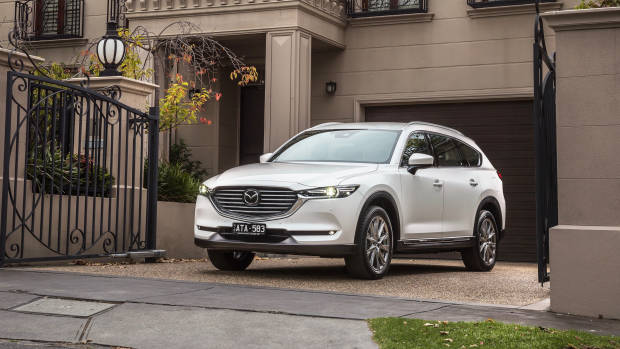
Initially, the CX-8 arrives in Australia with two trim grades: the entry-level Sport and luxurious Asaki. Pricing starts at $42,490 for the front-wheel drive Sport – all-wheel drive adds $4,000. The Asaki is all-paw only, and is priced at $61,490, and is available exclusively with all-wheel drive. Curious about where that puts the CX-8 within the broader Mazda SUV lineup? Well, a second-tier CX-5 Touring AWD diesel is $41,590, while a base model CX-9 Sport front-wheel-drive costs $43,890. Granted, each model has different equipment levels, but you see how crowded Mazda dealerships will be getting at this price point.
Despite resembling a ‘stretched’ CX-5 it is worth noting that the CX-8 is ultimately priced more like its big brother, the CX-9. In fact, the ‘8’ is quite a bit pricier than a top-spec CX-5 Akera – to the tune of about $12,000 – so you’d really want those extra seats.
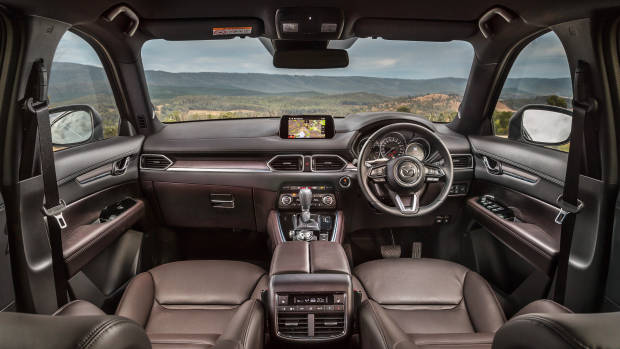
That said, the CX-8 is equipped more generously than a CX-5, and that applies to both grades of the new SUV. Where the CX-5 limits most advanced safety tech to the top-grade car, the CX-8’s base model throws in adaptive cruise control with stop and go functionality, lane keep assist, driver fatigue detection and auto high beam on top of the now-expected AEB (in forward and reverse), blind spot monitoring, and rear cross-traffic alert. The CX-8 base model also scores a full-colour head-up display, roof rails, 17-inch alloys, LED headlights, three-zone climate control, DAB+ digital radio, and satellite navigation.
Stepping up to the CX-8 Asaki adds soft Nappa leather trim in white or chocolate brown, heated front and outer middle row seats, a heated steering wheel, a 272-watt 10-speaker Bose sound system, a 360-degree parking camera, an electric tailgate, rear window sunshades, wood dashboard and door trims, keyless entry and start, adaptive LED headlights, a 10-way electric driver with memory/6-way electric passenger front seat adjustment and 19-inch alloy wheels.
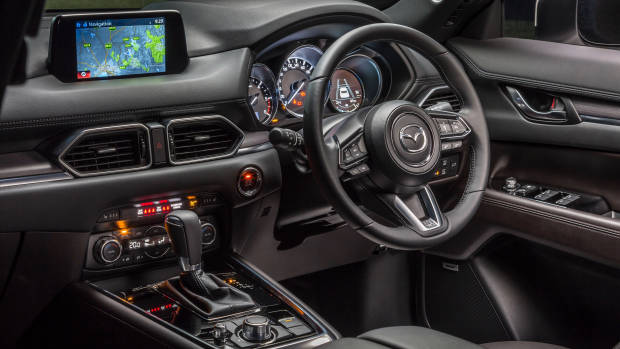
The CX-8 doesn’t leave many features out: the glaring omissions, Apple CarPlay and Android Auto, are coming before the end of the year and will be retrofittable to CX-8s delivered before that happens. Other features such as a kick-to-open tailgate, a sunroof, ventilated front seats, a digital driver’s display and a higher-resolution main screen simply aren’t available, but would make the car feel more bespoke – at present, the CX-8 does feel like it borrows largely from existing Mazda models. It’s also worth noting that once you’ve spent $61,490 plus on-road costs for a CX-8 Asaki, a $64,790 CX-9 Azami isn’t much more money, but you get a much larger vehicle and a quieter petrol engine. Food for thought.
Stepping inside the CX-8’s cabin is a lesson in deja vu coming from any other current Mazda product. The dashboard layout layout is identical to the CX-5, which is both good and bad – the CX-5’s cabin is one of our favourites in its segment, though it would be nice to see Mazda give the CX-8 a unique dash given its expense and newness. The good bits from the CX-5 are carried over to the CX-8 – the high quality materials with stitching on the dash and door tops, the faux leather trim inserts where your legs rest and the excellent driving position with thin pillars remain. The old Mazda heating and ventilation controls and the smaller 7.0-inch MZD screen have been carried over however. That latter point is a disappointment, when you consider the new Mazda 6 has been upgraded to eight inches.
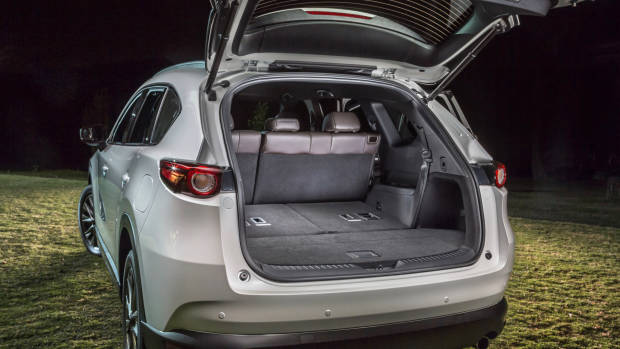
Measuring in at 4,900mm long, the Mazda CX-8 sits about halfway between the 4,550mm CX-5 and 5,075mm CX-9. The CX-8 and CX-9 share the same 2,930mm-long wheelbase, ensuring identical middle row legroom – yet the CX-8 is narrow, with identical width to the CX-5 at 1,840mm: the CX-9 is 1,969mm across. Height? The CX-8 is 1,725mm tall, versus the 1,747mm tall CX-9 and 1,675mm tall CX-5. The lessened width of the Mazda CX-8 means that fitting three occupants across the middle row is not as easy as the CX-9, though the second row is vastly superior to the CX-5 with much more legroom and more features for kids to play with. In addition to that, the CX-8 features a rear climate zone and sunshades in the windows for parents to keep their kids quiet on roadtrips.
Behind the third row of seating, there is 209L of boot space – a Skoda Kodiaq offers 270-litres – but folding the third row flat for a five-seater creates 742-litres, whalloping the CX-5’s five-seat 442-litre capacity. The cargo space itself features underfloor storage to keep items such as laptops away from prying eyes whilst folding and erecting the third row could not be easier – pull the tab on the back and push or pull the seat up or down. The third row itself really is best for children however – this six foot adult could barely fit his head, though as least access to it is easy with sliding and reclining rear seats. The second row is much more appealing for families, and it would be the main reason as to spend the extra money over a CX-5, in our opinion – the legroom is far larger than the CX-5, and it’s more comfortable as well with a wider seat base.
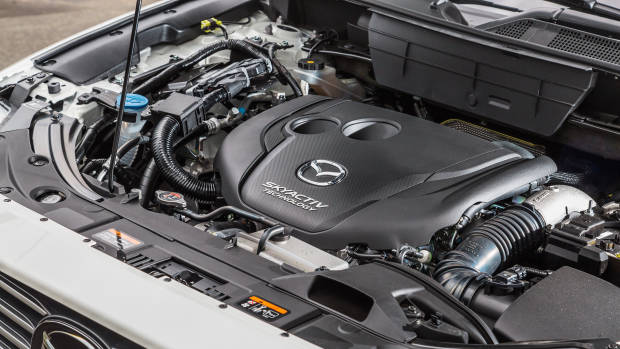
As you may have guessed, driving the Mazda CX-8 is like a mix of CX-5 and CX-9 vibes. The CX-5’s 2.2-litre four-cylinder twin-turbo diesel engine was upgraded for 2018, and now produces 140kW of power and a strong 450Nm of torque. Availability of this engine was part of the key criteria of the CX-8 push for Mazda Australia, who understand that some buyers are turned off the CX-9 because of its higher, petrol-driven fuel consumption. The diesel engine is smooth, and for 2018 it was made more quiet. In the CX-8, the 200+ kilogram weight gain over the ‘5’ has dulled its performance; the CX-8’s 1,840kg kerb weight is just 5kg less than the CX-9 in Sport FWD spec. This would explain the high-ish fuel economy on launch. The sticker said 6.0L/100km combined, but our CX-8s were delivering north 8L/100km mark, which isn’t brilliant considering we sat around 100km/h. Mazda claims a 0-100km/h sprint of 9.6s for the CX-8 AWD – 2 seconds slower than the equivalent CX-5.
Straight-line performance might be a bit slower, but the CX-8’s overall dynamics aren’t greatly affected by the extra mass. Handling-wise, there’s no question that you’re in a larger CX-5, but the longer wheelbase affords the Mazda CX-8 better ride quality with a bit more float and compliance over big bumps. That said, it’s not as soft as the Peugeot 5008. What does need improvement is the road noise. The diesel is generally well isolated, but this accentuates the lack of sound deadening on rough, fast roads of the sort used for the local launch. The combination of CX-5 width and CX-9 wheelbase has made the Mazda CX-8 feel a bit rolly polly through the corners – the CX-5 is more poised, and the CX-9 more planted. The CX-8’s steering is a good system though, with good weighting in a typical Mazda fashion.
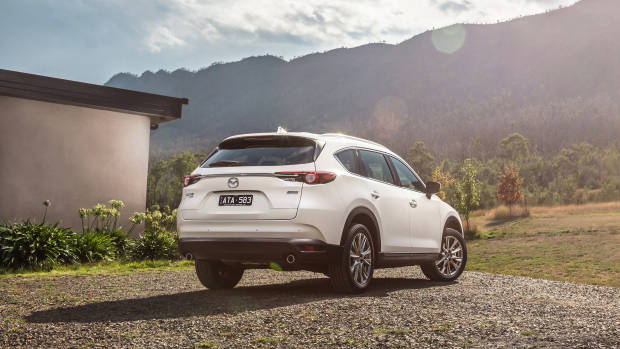
A pessimist would say the Mazda CX-8 lacks imagination – but in reality, this car is a worthy addition to the Australian Mazda range. It takes the useful parts of the CX-5 and CX-9, and combines them into a mostly successful 5+2 seater SUV. Our only major concerns lie in the pronounced road noise, as well as the $15,000 price jump internally from grade to grade. These relatively minor problems contrast to the CX-8’s admirable practicality, solid driving dynamics and long standard equipment list – Australians have certainly never had it better when shopping for a seven-seat SUV. But, before you buy, check both the CX-5 and CX-9 and see if the Goldilocks CX-8 really is the just right Mazda SUV for your family.
Key specs (as tested)
About Chasing cars
Chasing Cars reviews are 100% independent.
Because we are powered by Budget Direct Insurance, we don’t receive advertising or sales revenue from car manufacturers.
We’re truly independent – giving you Australia’s best car reviews.
The estimate provided does not take into account your personal circumstances but is intended to give a general indication of the cost of insurance, in order to obtain a complete quote, please visit www.budgetdirect.com.au. Estimate includes 15%^ online discount.
^Conditions Apply
Budget Direct Insurance arranged by Auto & General Services Pty Ltd ACN 003 617 909(AGS) AFSL 241 411, for and on behalf of the insurer, Auto & General Insurance Company Limited(ABN 42 111 586 353, AFSL 285 571).Because we don’t know your financial needs, we can’t advise you if this insurance will suit you. You should consider your needs and the Product Disclosure Statement before making a decision to buy insurance. Terms and conditions apply.
Indicative quote based on assumptions including postcode , 40 year old male with no offences, licence suspensions or claims in the last 5 years, a NCD Rating 1 and no younger drivers listed. White car, driven up to 10,000kms a year, unfinanced, with no modifications, factory options and/or non-standard accessories, private use only and garaged at night.
^Online Discounts Terms & Conditions
1. Discounts apply to the premium paid for a new Budget Direct Gold Comprehensive Car Insurance, Third Party Property Only or Third Party Property, Fire & Theft Insurance policy initiated online on or after 29 March 2017. Discounts do not apply to optional Roadside Assistance.
2. Discounts do not apply to any renewal offer of insurance.
3. Discounts only apply to the insurance portion of the premium. Discounts are applied before government charges, taxes, levies and fees, including instalment processing fees (as applicable). The full extent of discounts may therefore be impacted.
4. We reserve the right to change the offer without notice.